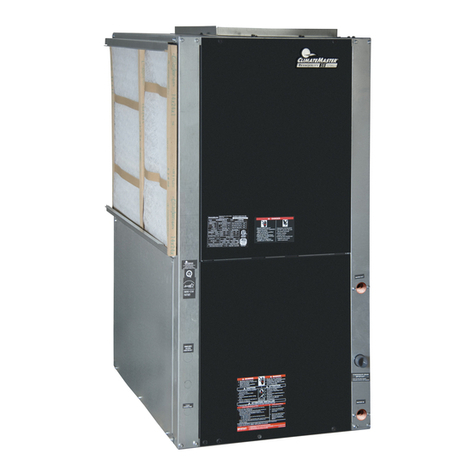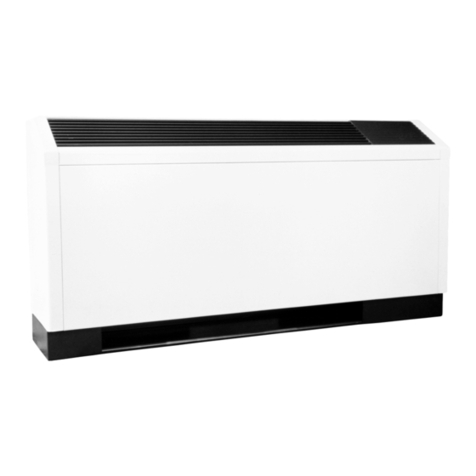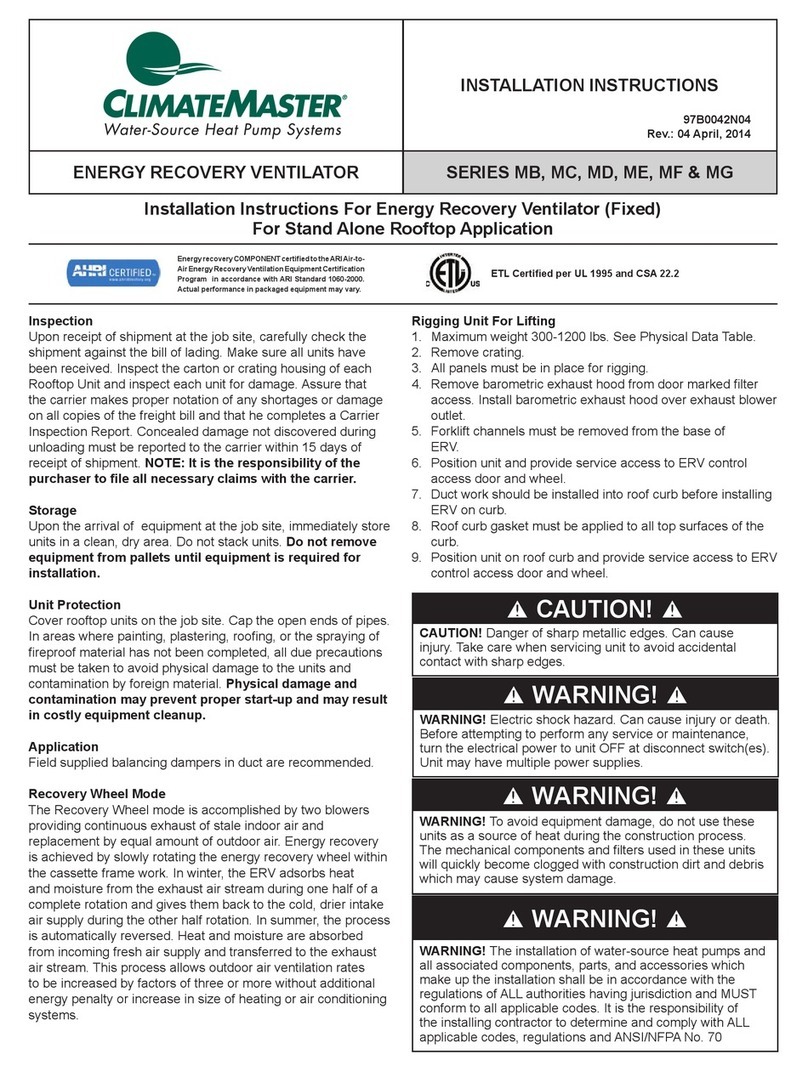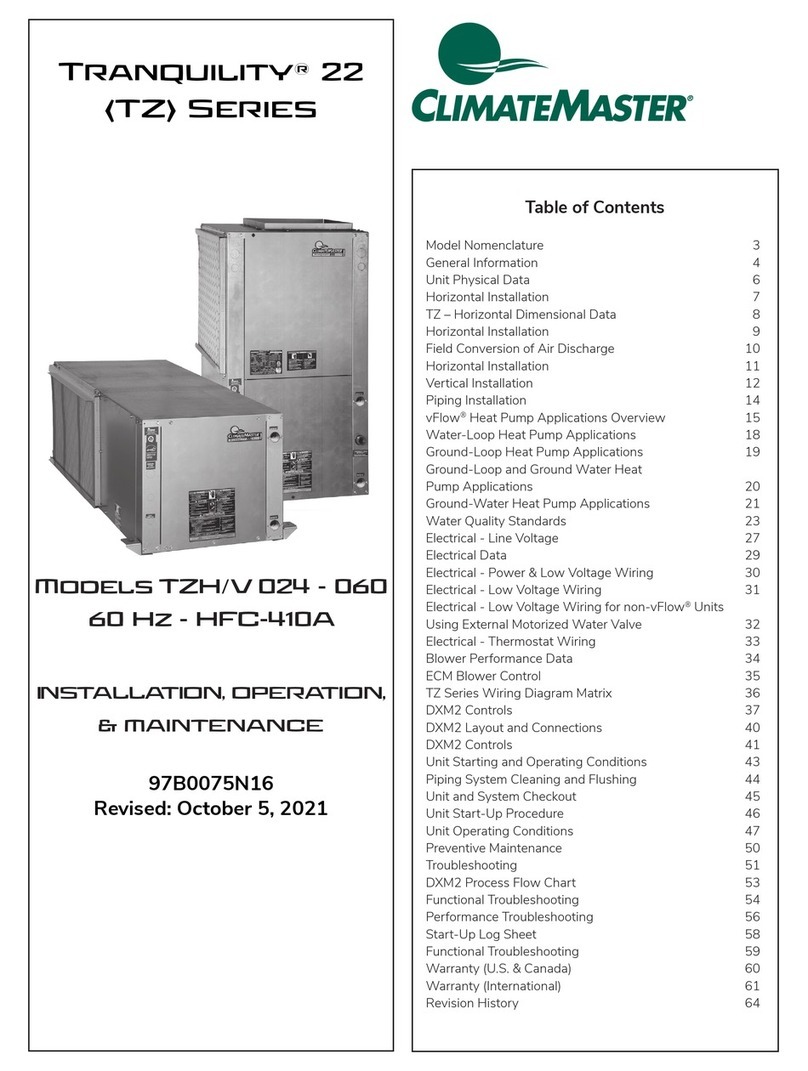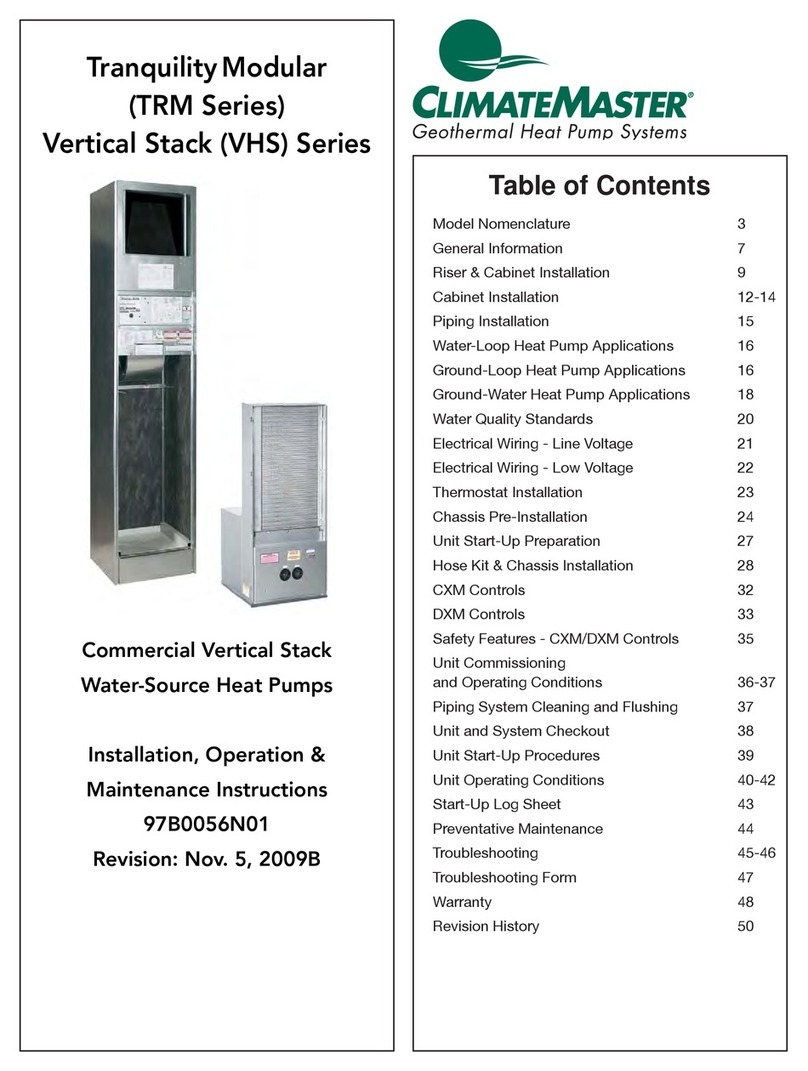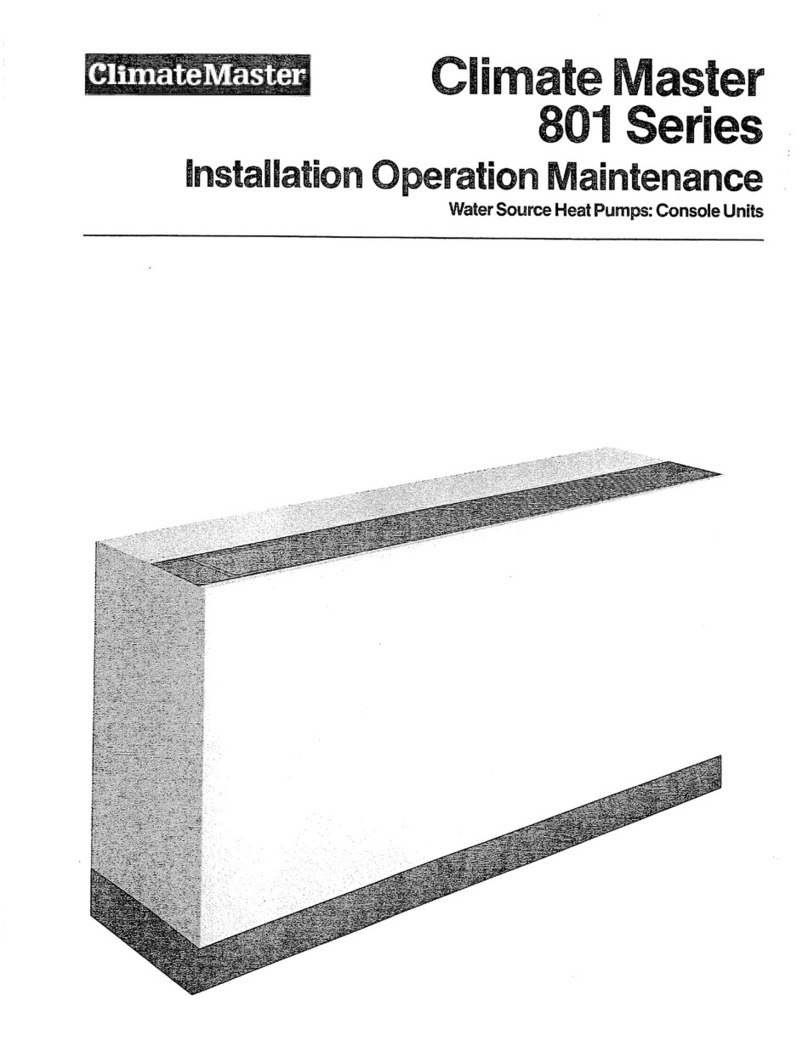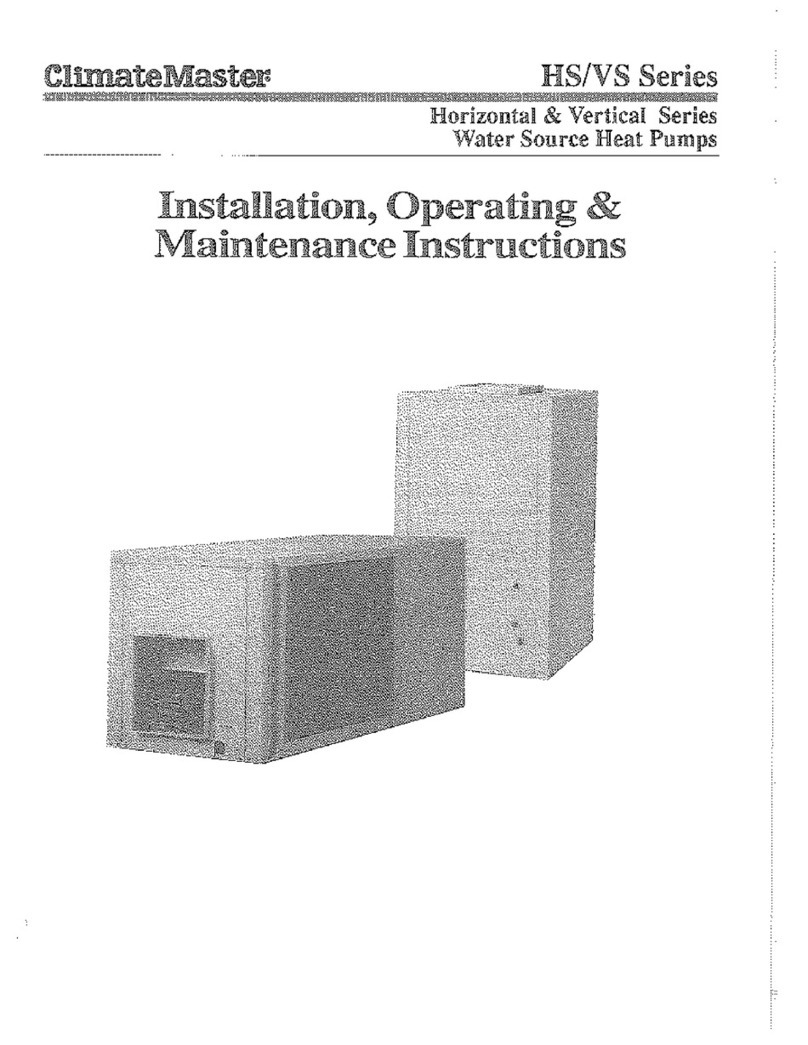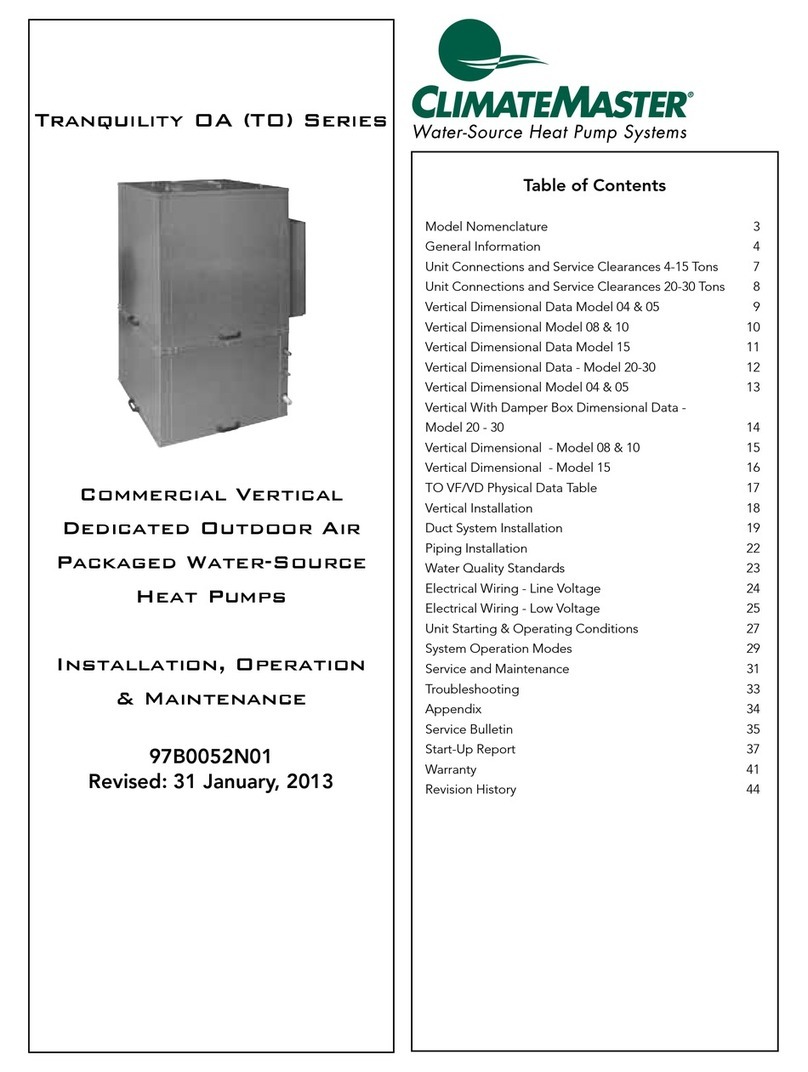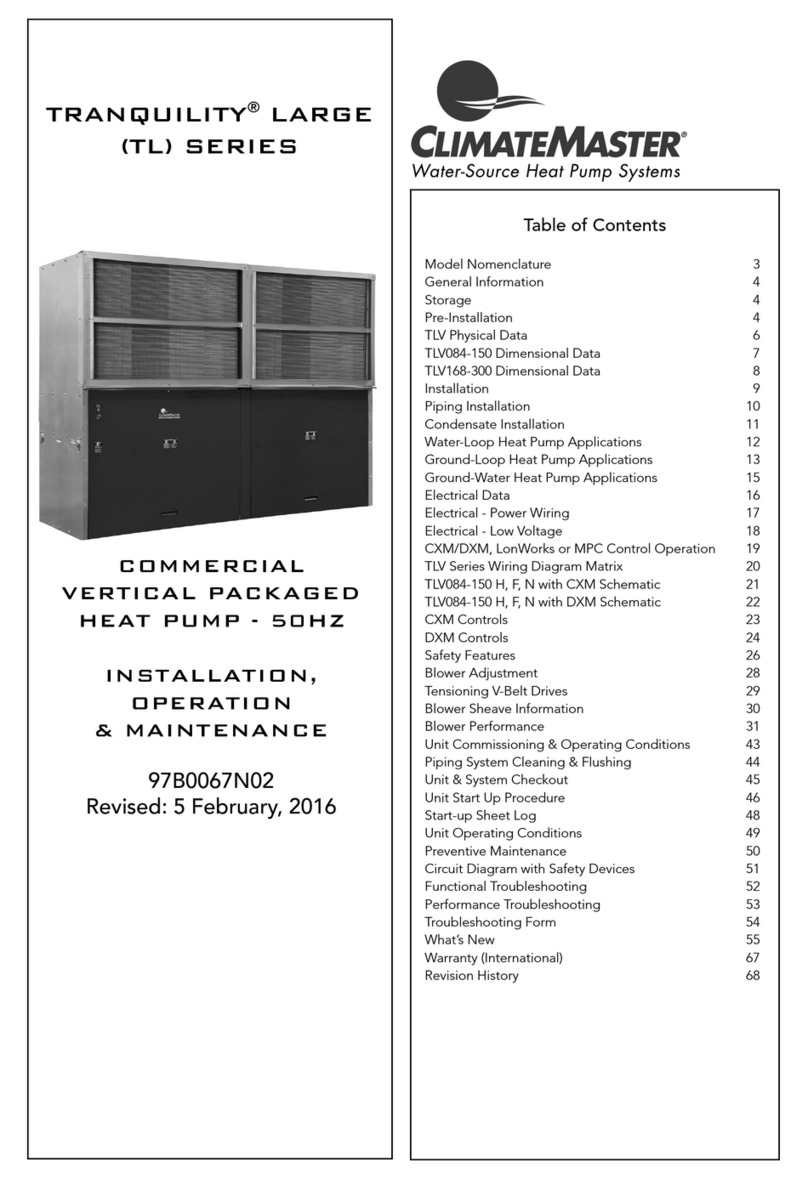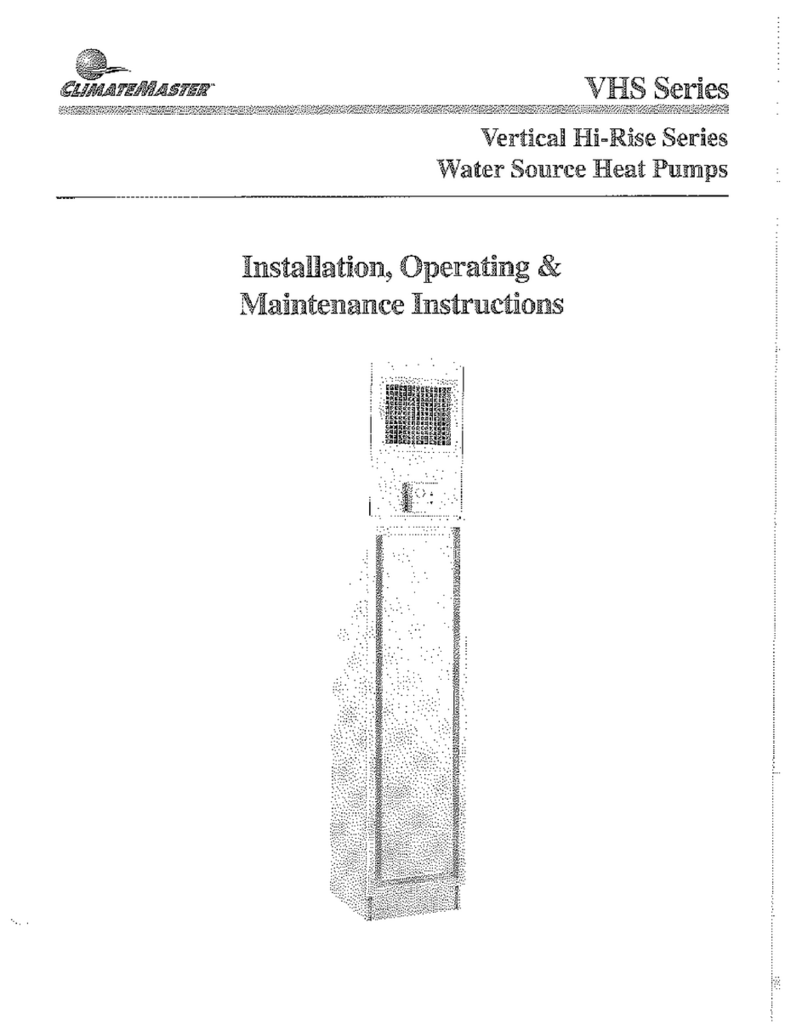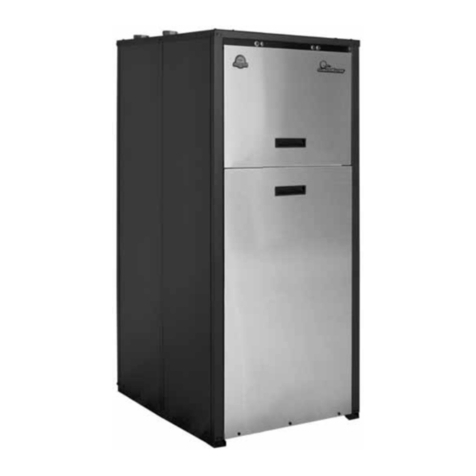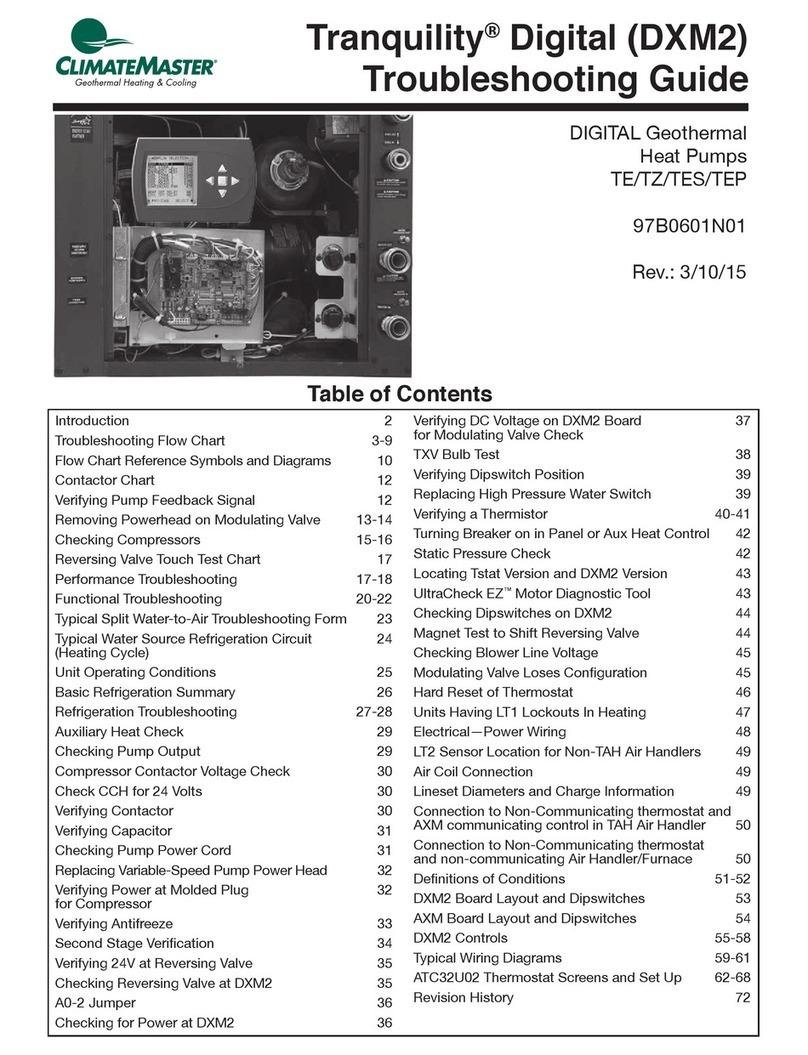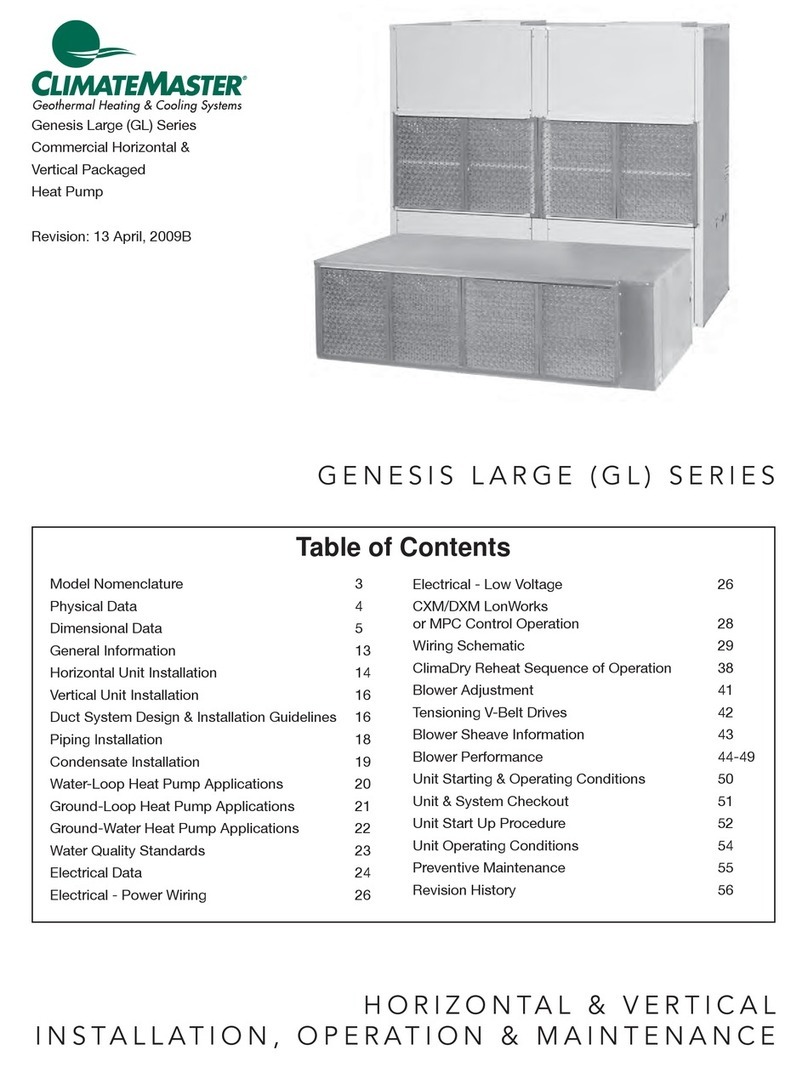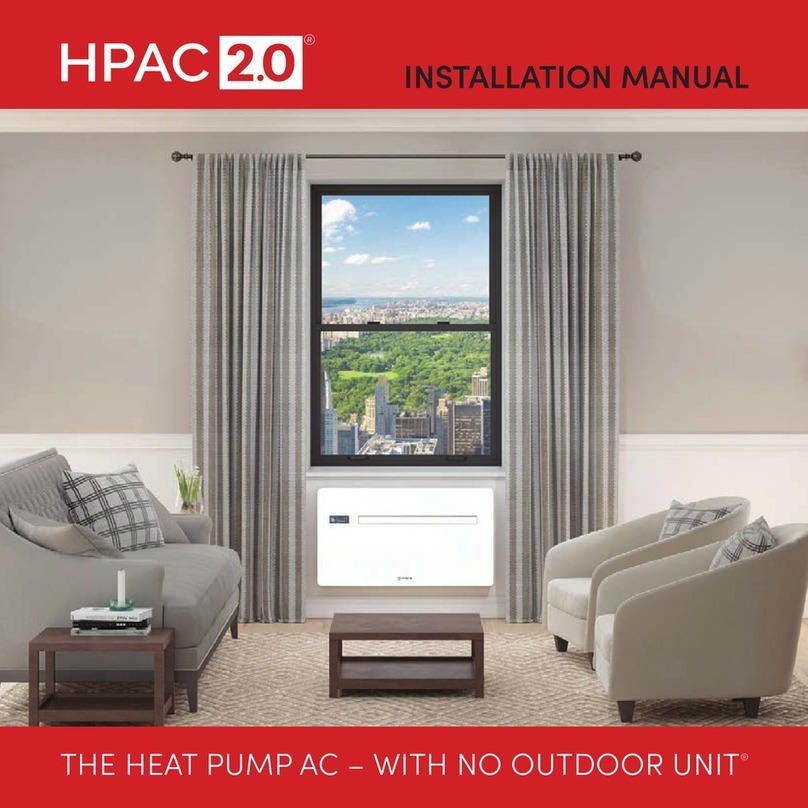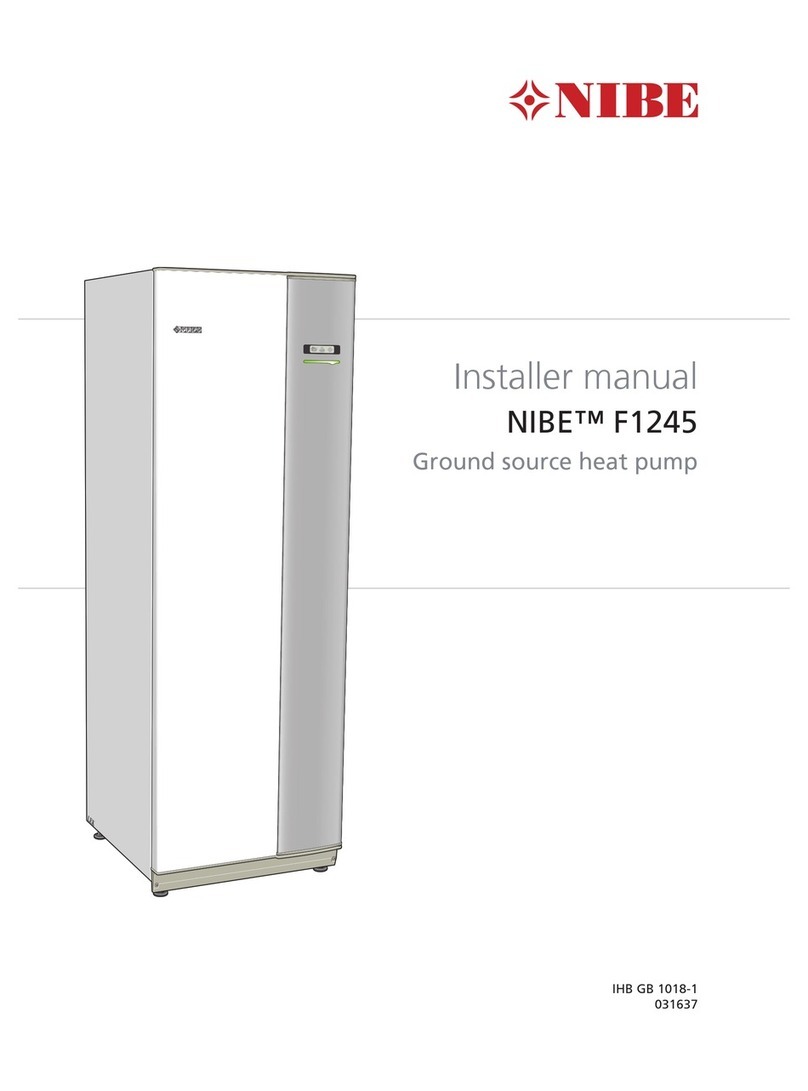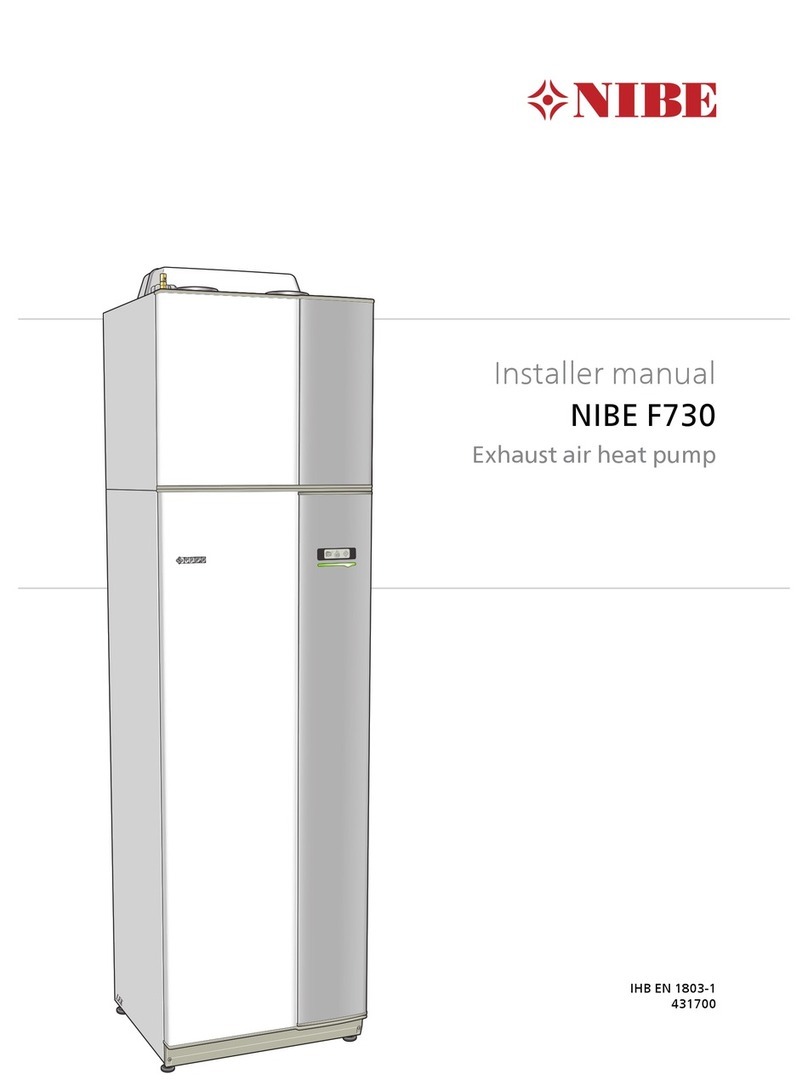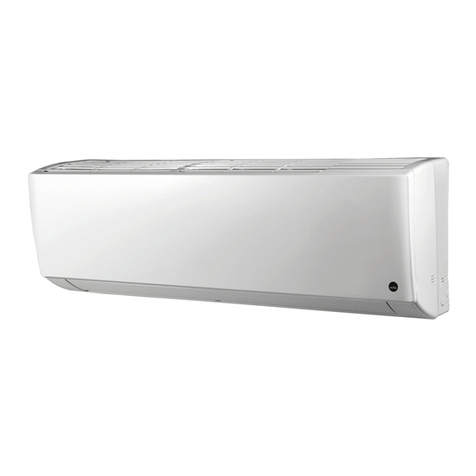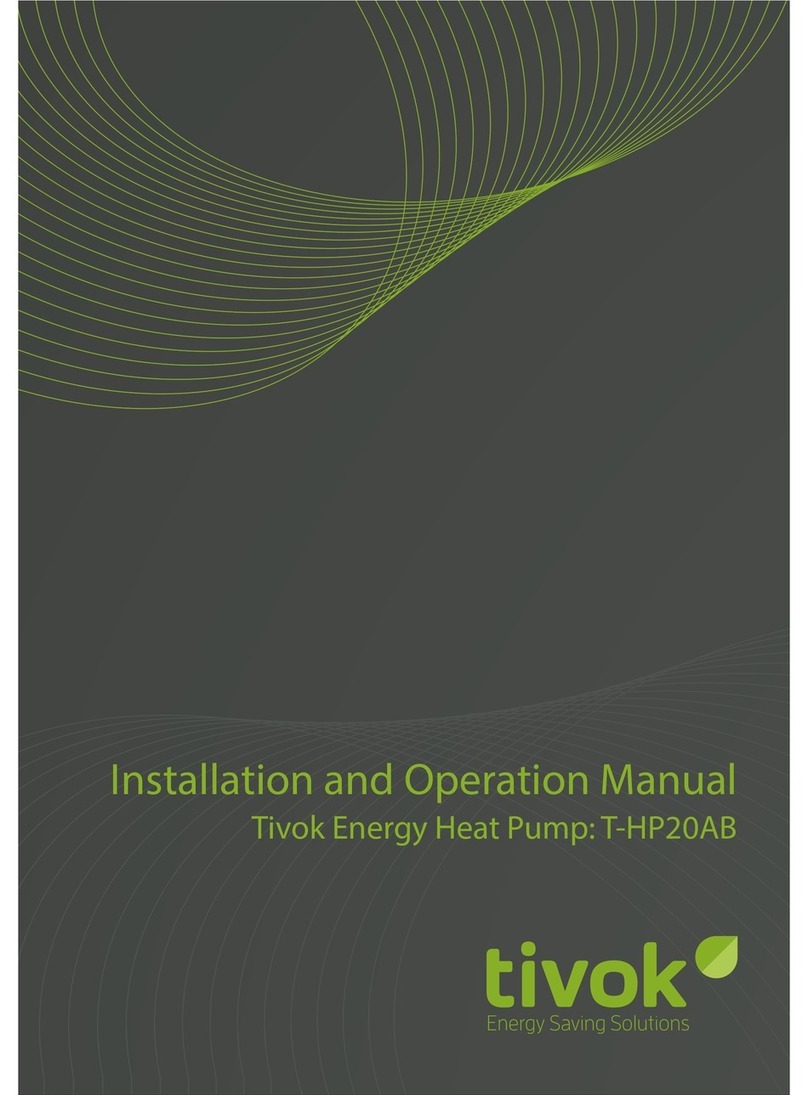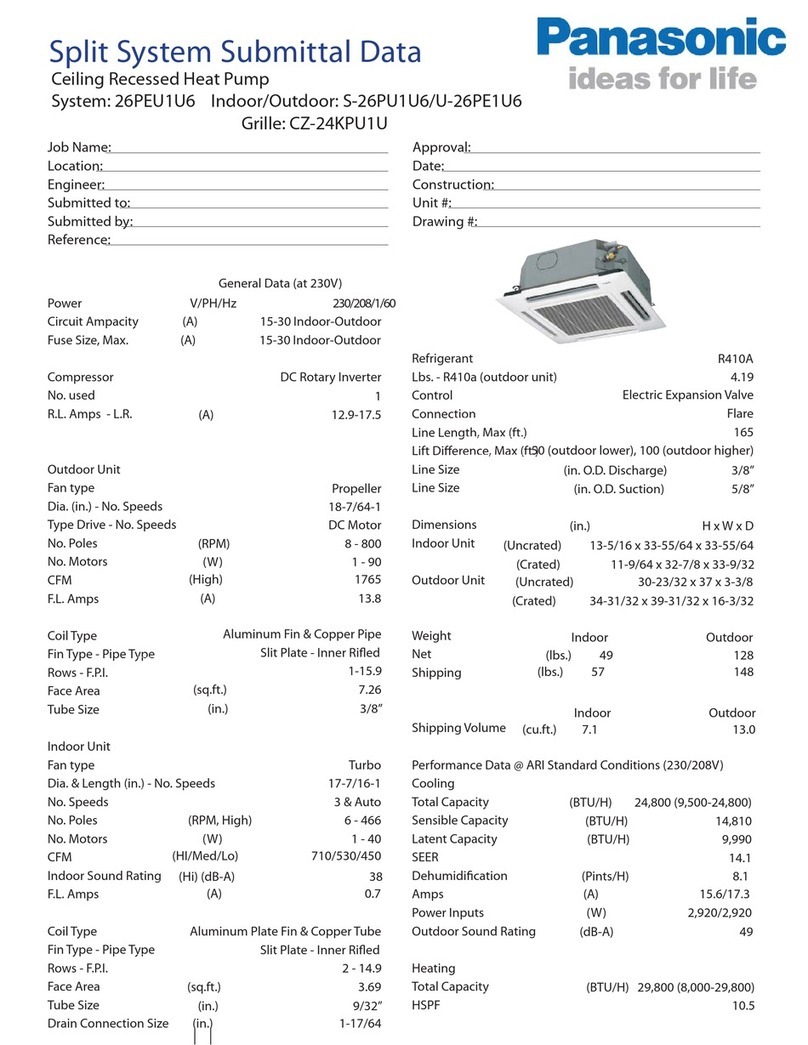
Tranquility®Digital Quick Start Guide
Rev.:January 25, 2016
6Geothermal Heat Pump Systems
AIR FILTER
This feature displays an alert to remind the user to change
the air filter after the selected time has passed. Adjust the
Air Filter Reminder settings using the up/down arrow buttons.
Press the center button to save changes.
• Cumulative Run Time (default Off) – valid range:
Off, 400 to 3600 hours (in 100 hour increments)
• Calendar Time (default Off) – valid range: Off, 3
to 48 months (in 3 month increments)
HUMIDIFIER
This feature displays an alert to remind the user to change
the humidifier pad after the selected time has passed.
Adjust the Humidifier Reminder settings using the up/down
arrow buttons. Press the center button to save changes.
• Cumulative Run Time (default Off) – valid range:
Off, 400 to 3600 hours (in 100 hour increments)
• Calendar Time (default Off) – valid range: Off, 3
to 24 months (in 3 month increments)
UV LAMP
This feature displays an alert to remind the user to change
the UV lamps after the selected time has passed.
Adjust the UV Lamp Reminder settings using the up/down
arrow buttons. Press the center button to save changes.
• Cumulative Run Time (default Off) – valid range:
Off, 400 to 3600 hours (in 100 hour increments)
• Calendar Time (default Off) – valid range: Off, 3
to 48 months (in 3 month increments)
AIR CLEANER
This feature displays an alert to remind the user to clean the
filter(s) after the selected time has passed.
Adjust the Air Cleaner Reminder settings using the up/down
arrow buttons. Press the center button to save changes.
• Cumulative Run Time (default Off) – valid range:
Off, 400 to 3600 hours (in 100 hour increments)
• Calendar Time (default Off) – valid range: Off, 3
to 24 months (in 3 month increments)
Step 4 Input Dealer Information
Enter/edit the Dealer Information settings, including Brand,
Name, Model Number, Serial Number, Contractor Name, and
Contractor Phone number, using the up/down arrow buttons.
Press the center button to save changes.
Step 5 Humidity Configuration
Configure humidity control settings (dehumidification/ humidi-
fication).
Adjust the Humidity Control settings using the up/down arrow
buttons. Press the center button to save changes.
• Dehumidification – This logic will communicate
a Dehumidification output when the humidity is
greater than the setpoint (acts as a dehumidistat).
The Dehumidification output will not be
communicated when the humidity is below the
setpoint.
• Humidification – This logic will communicate a
Humidification output when the humidity is less
than the setpoint (acts as a humidistat). When the
Humidification output is active, the fan output will
also be active. The Humidification output will not
be communicated when the humidity is above the
setpoint.
• Both – Incorporates both Dehumidification and
Humidification logic.
• None (default) – Dehumidification and
Humidification outputs will not be communicated.
Step 6 Temperature Algorithm
Configure the logic the thermostat uses to meet the tempera-
ture setpoints.
• Proportional Integral (default) – This logic will
use a combination of temperature differential and
operating time to determine the appropriate heating
or cooling stages for operation (see NOTE 1).
• Proportional Integral (No Down Staging) – This
logic includes the Proportional Integral logic, but
in addition the logic keeps all active heating or
cooling stages energized until the demand is fully
satisfied (see NOTE 1).
• Differential – This logic will only use temperature
differential to determine the appropriate heating or
cooling stages for operation. This logic will keep all
active heating or cooling stages energized until the
demand is fully satisfied (see NOTE 2).
NOTE 1: The Proportional Integral options require first stage
heating or cooling to be active for a minimum of 5 minutes,
before energizing second stage when configured for multi
stage operation.
NOTE 2: The Differential option will activate first stage
heating or cooling when the temperature is more than the
first stage differential value (UM section 5.6.2.3), below or
above the setpoint. Second stage heating or cooling will be
activated when the temperature is more than the first and
second stage differential values combined, below or above
the setpoint. Third stage heating will be activated when the
temperature is more than the first, second, and third stage
differential values combined (UM section 5.6.2.3), below the
setpoint.











